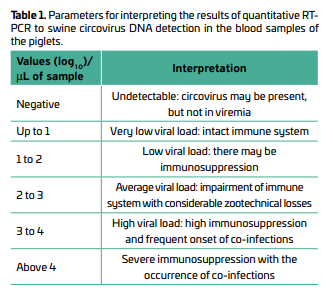Association of porcine circovirus infection with mycotoxicosis: a case report
DOI:
https://doi.org/10.21708/avb.2022.16.1.10464Abstract
Circovirus is widespread in pig farming, and mainly affects piglets increasing morbidity and mortality rates, being vaccination the most effective strategy to control one. However, for an effective vaccine response, certain factors must be considered, such as the adoption of good practices during the conservation and handling of vaccines, environmental challenges, nutritional and health status of the animals, and presence of immunosuppressive agents, such as mycotoxins, in the feed. Here, we describe a circovirus outbreak associated with mycotoxin immunosuppression that occurred in the piglets during the nursery phase at a commercial farm, which initiated with a sudden increase in the mortality of vaccinated piglets. Blood samples were collected and analyzed using RT-PCR, while the feed was subjected to mycotoxicological analysis. RT-PCR analysis revealed the presence of porcine circovirus type 2 (PCV-2) in the blood serum samples, thereby confirming the circovirus outbreak. The feed analysis revealed elevated levels of mycotoxins (deoxynivalenol, aflatoxins, and fumonisins), which were above the levels tolerated by the piglets during the nursery phase. Therefore, the contaminated feed was discarded, and a new ration was made available. Concurrently, the vaccination program was amended to normalize the mortality rate. The presence of mycotoxins in the feed could be the predisposed factor for piglet infection caused by PCV-2 and other diseases. This is an important aspect because the immunosuppressive effect of mycotoxins can alter the vaccine response, thereby making the piglets more susceptible to the diseases even after being vaccinated, although they should be immunologically protected.
Downloads

Downloads
Published
Issue
Section
License
Autores que publicam na Acta Veterinaria Brasilica concordam com os seguintes termos: a) Autores mantém os direitos autorais e concedem à revista o direito de primeira publicação, com o trabalho simultaneamente licenciado sob a Licença Creative Commons Attribution que permite o compartilhamento do trabalho com reconhecimento da autoria e publicação inicial nesta revista. b) Autores têm autorização para assumir contratos adicionais separadamente, para distribuição não-exclusiva da versão do trabalho publicada nesta revista (ex.: publicar em repositório institucional ou como capítulo de livro), com reconhecimento de autoria e publicação inicial nesta revista. c) Autores têm permissão e são estimulados a publicar e distribuir seu trabalho online (ex.: em repositórios institucionais ou na sua página pessoal) a qualquer ponto antes ou durante o processo editorial, já que isso pode gerar alterações produtivas, bem como aumentar o impacto e a citação do trabalho publicado (Veja O Efeito do Acesso Livre).


 Esta obra está licenciada com uma Licença
Esta obra está licenciada com uma Licença 